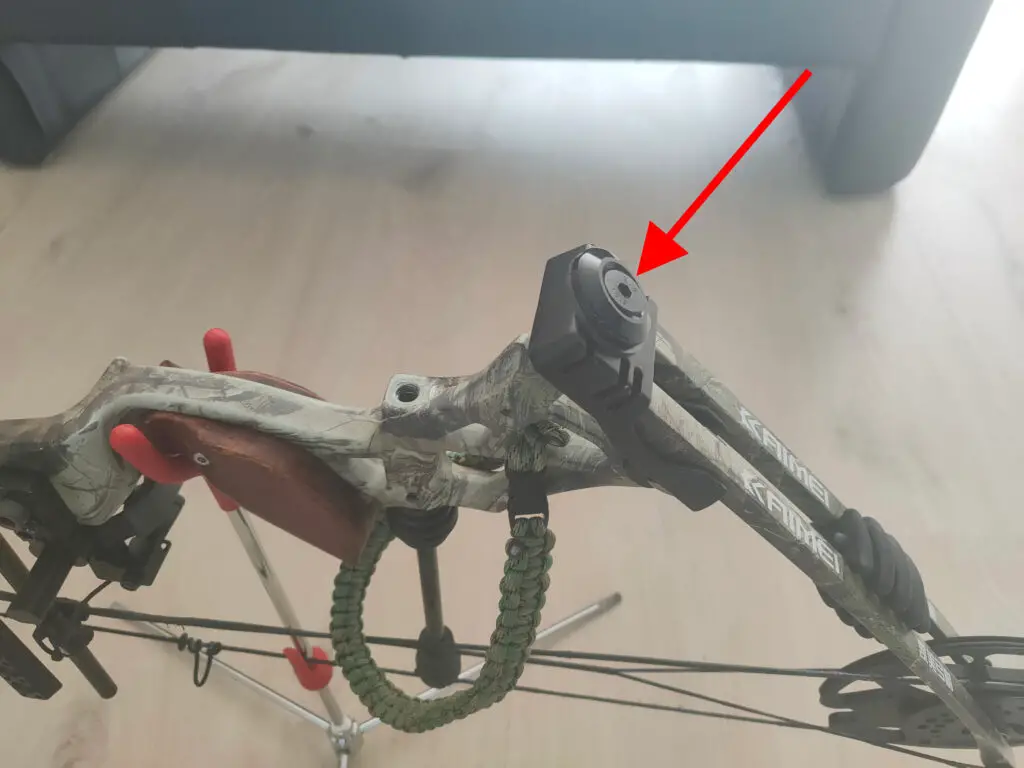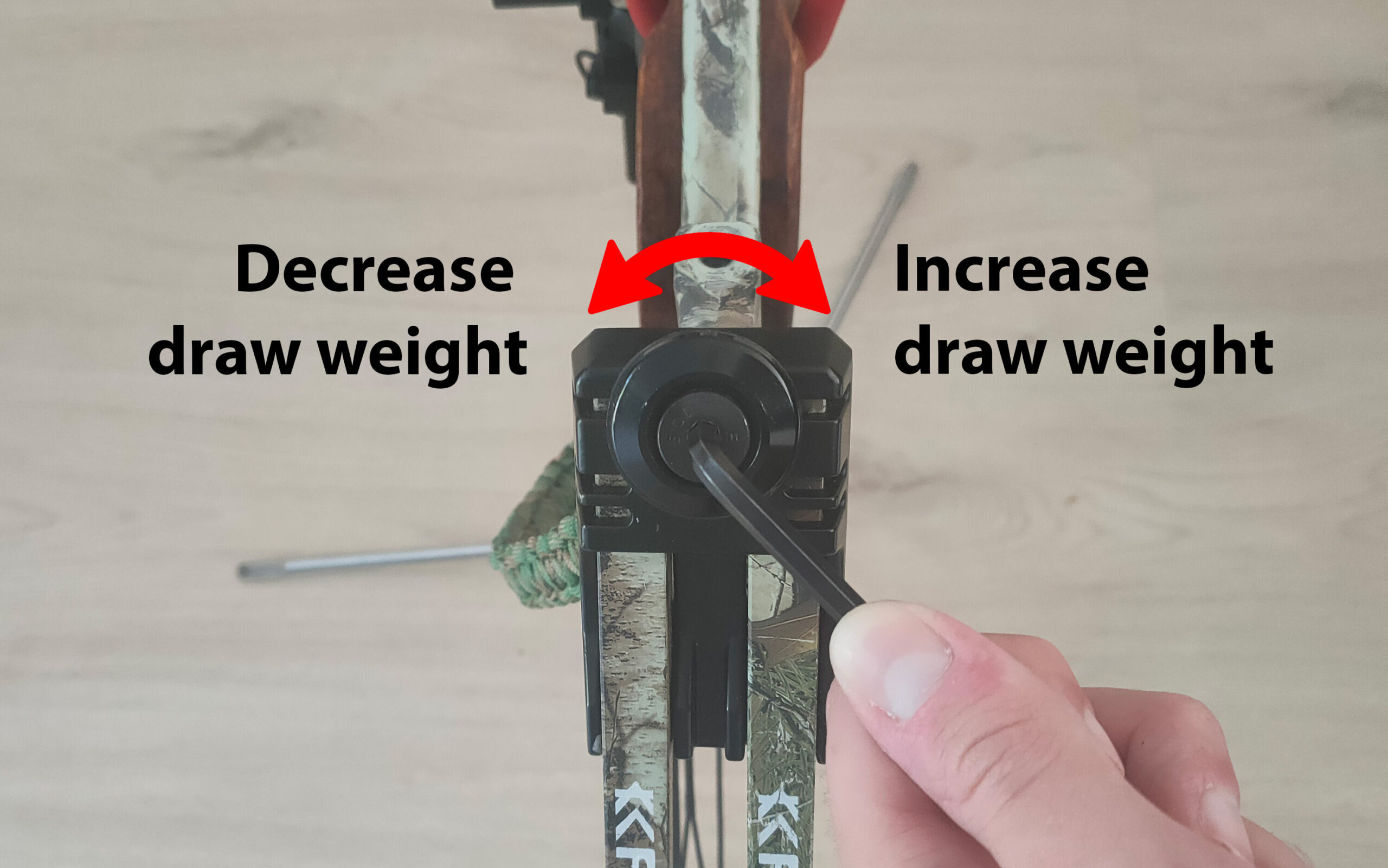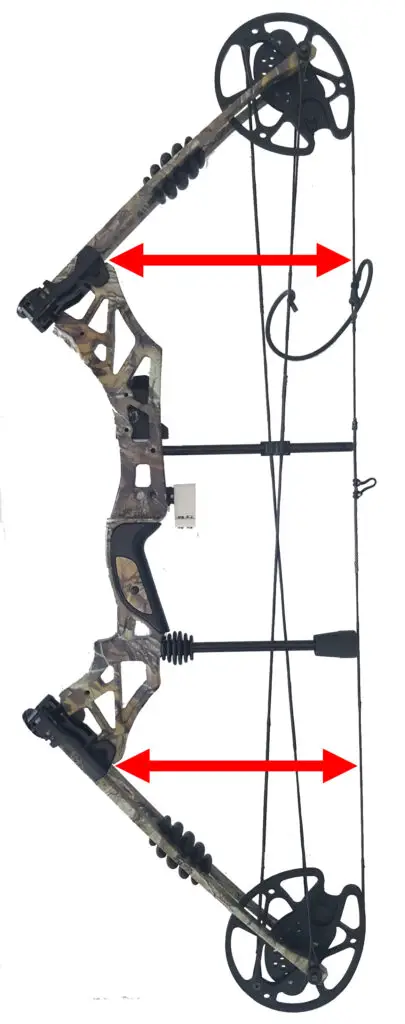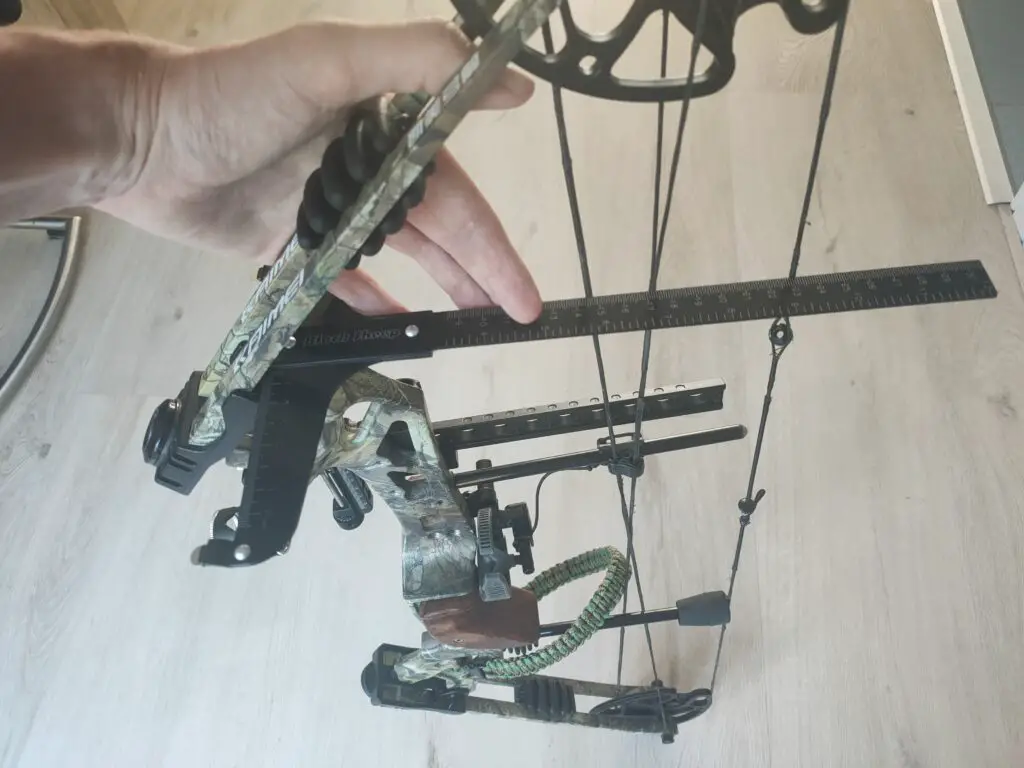There are many reasons why you might want to adjust the draw weight of your compound bow. Some could be related to your technique, your goals in archery, or the arrows you are shooting. Whatever your reason may be, you need to know how to properly adjust the draw weight of your compound bow.
In this article, I will give you a step-by-step guide on how to do so. But first, we need to find out if your compound bow has an adjustable draw weight and how much. So, we will discuss that first. At the end of this article, I will also explain more details about the adjustable draw weight and give some final tips.
How to find out if a compound bow is adjustable
Almost all compound bows have an adjustable draw weight, but some older or cheaper models may have a fixed tiller.
Before you can follow the step-by-step guide, you need to know if your compound bow is adjustable. To check if your compound bow has an adjustable draw weight, look at the point where the limb meets the riser. There should be a bolt that allows you to loosen the tiller. You cannot adjust the draw weight if there is no bolt there to loosen or tighten the tiller.

Adjustment ranges
If there is a screw on the tiller, you should be able to adjust the draw weight. How much strongly depends on the make and model of your bow.
More expensive bows tend to have a range of 10 LBS, for example, 50-60 LBS or 60-70 LBS. This is rather limited, and this range is primarily intended to finetune the tiller height. Another reason to finetune the draw weight is to match the arrow spine. If you are not familiar with arrow spine. I recommend, reading the article below:
Beginners’ bows and lower-end bows often allow you to adjust the draw weight with a much larger range. The range of 30-70 LBS is very common on these models. This gives you a lot of flexibility to build up your draw weight, which is perfect for beginners.
You might wonder why expensive bows have a lower range than cheap bows. The reason is that a large range makes it very difficult for the manufacturer to properly balance the forces in the bow. Therefore, archery manufacturers prefer to limit the range to make sure that the bow shoot more smoothly.
Adjusting the draw weight step by step
To adjust the draw weight on your compound bow, just follow these 5 steps:
1. Loosen the locking screws
Some compound bows have locking screws, these are on the side of the riser and lock the tiller bolt in place. You need to loosen these screws before you can adjust the tiller bolt. Just untwist the locking screw a few turns to release the tiller bolt.
Don’t forget to tighten the locking screw after you are finished. Many compound bows do not have locking screws for the tiller bolt. So, in that case, you can skip this first step.
2. Adjust the draw weight of the upper limb
Once the locking screws are released you can adjust the draw weight with the tiller bolt. The tiller bolt is the large bolt that secures the bow limb to the riser. Insert a hex/Allen wrench into the head and turn clockwise to increase the draw weight. Turn anti-clockwise to decrease the draw weight.

Be very careful when decreasing the draw weight. On some bows, you must be very careful to not fully untwist the tiller bolt. When this happens the bow can suddenly snap loose which can be painful and damage your bow. This is especially the case with compound bows that have a small adjustment range.
Make sure to count the number of twists. I recommend only doing 2 twists at a time. You should not unbalance the bow too much as this can cause damage.
3. Adjust the draw weight of the lower limb
Once you adjusted the upper limb, you can start adjusting the lower limb. Make sure to match this with the number of twists from the upper limb, to balance out the bow.
Some archers like to use a marking on the tiller bolts to keep track of the number of turns. You can use a marker to set a stripe on both bolts. Once you are done, you can remove the stripe with a damp cloth.

4. Check the draw weight
Once you have adjusted the draw weight, you can check the draw weight of your bow. You can do this on feel, but you can also measure it. The best device to do that is a bow scale. If you are looking for a cheap but reliable. I recommend this generic brand bow scale. I bought this bow scale a while ago and tested it on many bows and it works very well!
On recurve bows, you can also measure the draw weight with a luggage scale. But on a compound bow that is very difficult. You need to measure the peak draw weight, which is very difficult to measure with a luggage scale. For more information on how to measure the draw weight, make sure to read my in-depth article below:
How to measure your draw weight
If you want to change the draw weight more, you can go back to step 2 to adjust the upper limb again. Make sure to check your draw weight after every cycle as it can increase or decrease very fast if you add/remove 2 full twists.
You can also use half or quarter-turns if you want to make minor adjustments. Just make sure to match the turns on both limbs.
5. Check the tiller height and correct if necessary
Although your tiller height should not change if you have correctly adjusted the draw weight, I recommend checking it before you start shooting.
To check the tiller height, you will need a bow square. This is a simple device that is used in many applications in archery. If you are looking for a high-quality bow square I recommend this bow square from Legend Archery. I have tried many bow squares over the years and this is my favorite.
Use your bow square to measure the distance between the limb and the string, at the spot where the riser meets the limb. Make sure to measure this distance for both the upper and the lower limb. The bow square should be perpendicular to get accurate measurements.
The tiller height should match precisely on both ends. If that is not the case, you have to make some adjustments.


To get the bow back in alignment you need to remove twists from the side with the smallest tiller height. Alternatively, you can also tighten the side with the largest tiller height. Only make small adjustments (quarter or half turns)! This might be difficult to remember if you don’t know how the tiller works. So, if you want to learn more about the tiller I highly recommend reading:
Tiller height – what it is and how to adjust it
The article is mainly focused on recurve archery, as it’s more difficult on recurve bows. But the concepts are the same. Deepening your knowledge is extremely important as are working on your own bow!
Tips
Before you start tuning your bow, I want to give you the following tips:
- Only make small adjustments at a time: do not tighten one side without doing the other one. I recommend only adding one or two turns per side, as a maximum.
- Read the owner’s manual or visit your local archery shop when in doubt: especially if you are lowering the draw weight you must be very careful to not fully undo the tiller while the bow is under pressure. So, if you are uncertain about what you are doing, it’s better to play it safe!
- Think about retuning the bow: if you are only adding or removing 5 LBS from the draw weight, you probably don’t need to retune the bow. But if you change the draw weight more radically, you should consider how it affects the bow. You might even need arrows with a different spine rating.
How adjustable draw weight works
You can configure the draw weight of the compound bow by configuring the tiller. The tiller controls the angle of the limbs. If you tighten the tiller, the limbs will be pulled to a vertical angle. This puts more tension on the limbs causing the draw weight to increase.
The draw weight of the compound bow is fully reliant on the bow limbs. Stiffer limbs or thicker limbs will provide more resistance, and thus draw weight.
All materials will provide more resistance the farther you try to bend them. You can feel this with a ruler, the farther you try to bend it the more effort it takes. This force required increases linearly with every inch you try to bend it.
Therefore, another way to increase the stored energy is to bend the limbs farther. The tiller allows you to do this by putting pretension on the limbs and thus storing more energy in the limbs.
Compound bows are fascinating right? If you want a full explanation of how a compound bow works, make sure to read my in-depth article here:
How does a compound bow work – the full explanation
Final words
I hope this article helped you to adjust the draw weight on your bow. Please let me know if you have any questions by leaving them down in the comments! I will answer as soon as possible and send you an email when I have replied.
Tim van Rooijen
For as long as I can remember, I have always been fascinated by archery. First due to its historic significance but later because I like being outdoors. With this blog, I share my knowledge about Archery and how you can improve your shot. More about author…


